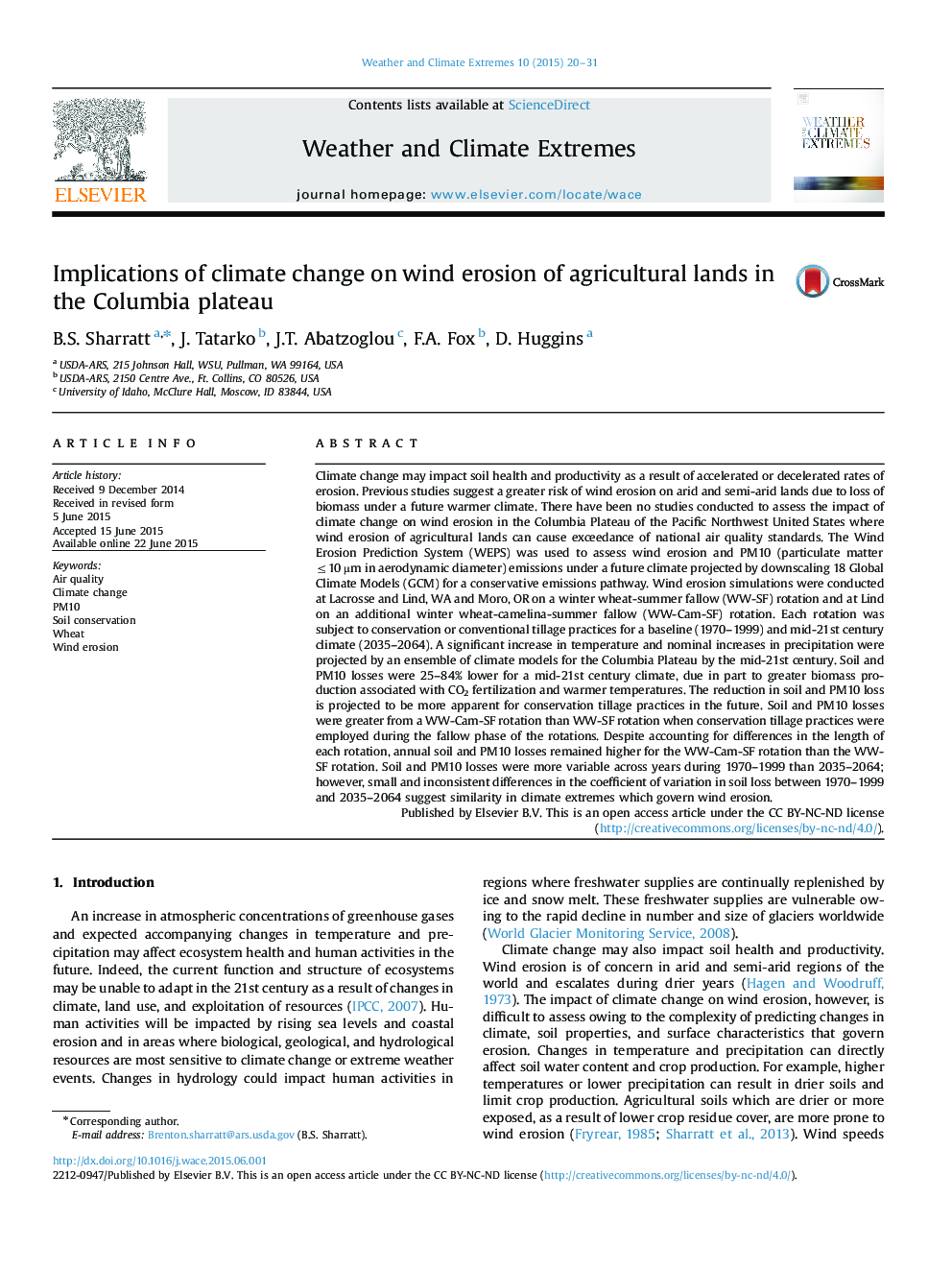| کد مقاله | کد نشریه | سال انتشار | مقاله انگلیسی | نسخه تمام متن |
|---|---|---|---|---|
| 1066711 | 948835 | 2015 | 12 صفحه PDF | دانلود رایگان |
عنوان انگلیسی مقاله ISI
Implications of climate change on wind erosion of agricultural lands in the Columbia plateau
ترجمه فارسی عنوان
تاثیرات تغییرات آب و هوایی بر فرسایش باد زمین های کشاورزی در فلات کلمبیا
دانلود مقاله + سفارش ترجمه
دانلود مقاله ISI انگلیسی
رایگان برای ایرانیان
کلمات کلیدی
موضوعات مرتبط
مهندسی و علوم پایه
علوم زمین و سیارات
علم هواشناسی
چکیده انگلیسی
Climate change may impact soil health and productivity as a result of accelerated or decelerated rates of erosion. Previous studies suggest a greater risk of wind erosion on arid and semi-arid lands due to loss of biomass under a future warmer climate. There have been no studies conducted to assess the impact of climate change on wind erosion in the Columbia Plateau of the Pacific Northwest United States where wind erosion of agricultural lands can cause exceedance of national air quality standards. The Wind Erosion Prediction System (WEPS) was used to assess wind erosion and PM10 (particulate matter â¤10 µm in aerodynamic diameter) emissions under a future climate projected by downscaling 18 Global Climate Models (GCM) for a conservative emissions pathway. Wind erosion simulations were conducted at Lacrosse and Lind, WA and Moro, OR on a winter wheat-summer fallow (WW-SF) rotation and at Lind on an additional winter wheat-camelina-summer fallow (WW-Cam-SF) rotation. Each rotation was subject to conservation or conventional tillage practices for a baseline (1970-1999) and mid-21st century climate (2035-2064). A significant increase in temperature and nominal increases in precipitation were projected by an ensemble of climate models for the Columbia Plateau by the mid-21st century. Soil and PM10 losses were 25-84% lower for a mid-21st century climate, due in part to greater biomass production associated with CO2 fertilization and warmer temperatures. The reduction in soil and PM10 loss is projected to be more apparent for conservation tillage practices in the future. Soil and PM10 losses were greater from a WW-Cam-SF rotation than WW-SF rotation when conservation tillage practices were employed during the fallow phase of the rotations. Despite accounting for differences in the length of each rotation, annual soil and PM10 losses remained higher for the WW-Cam-SF rotation than the WW-SF rotation. Soil and PM10 losses were more variable across years during 1970-1999 than 2035-2064; however, small and inconsistent differences in the coefficient of variation in soil loss between 1970-1999 and 2035-2064 suggest similarity in climate extremes which govern wind erosion.
ناشر
Database: Elsevier - ScienceDirect (ساینس دایرکت)
Journal: Weather and Climate Extremes - Volume 10, Part A, December 2015, Pages 20-31
Journal: Weather and Climate Extremes - Volume 10, Part A, December 2015, Pages 20-31
نویسندگان
B.S. Sharratt, J. Tatarko, J.T. Abatzoglou, F.A. Fox, D. Huggins,
